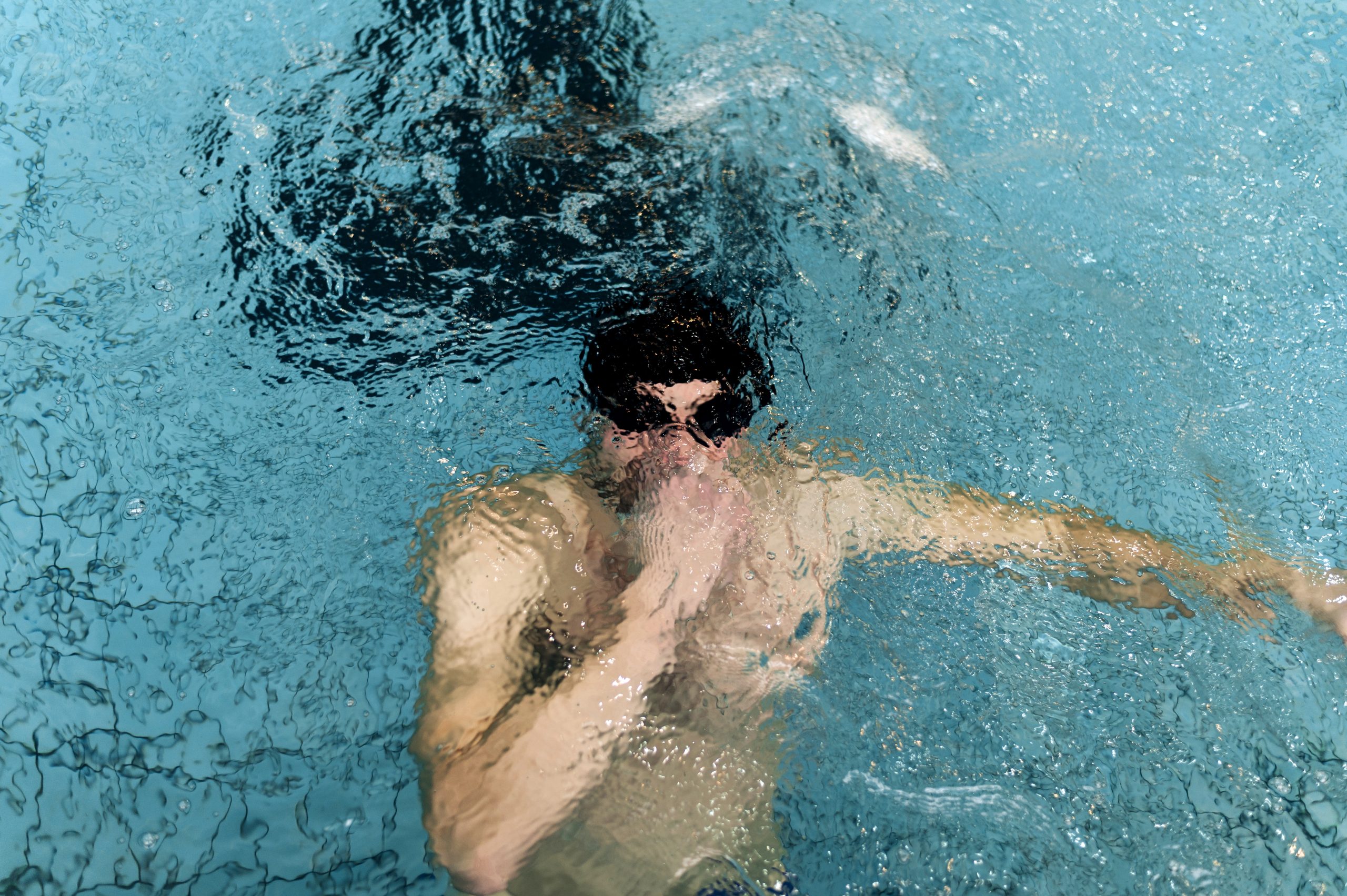Your cart is currently empty!
Watch – This Freediver Held His Breath for 29 Minutes Straight, Breaking the World Record

The urge to breathe is one of our most powerful, primal instincts, a survival mechanism that is nearly impossible to ignore. Yet, on June 14, 2025, Croatian freediver Vitomir Maričić defied that instinct, holding his breath underwater for an astonishing 29 minutes and 3.07 seconds, shattering the world record.
This incredible feat, which defies our basic understanding of human physiology, wasn’t the result of some superhuman ability, but rather a fascinating convergence of disciplined training and cutting-edge science that allows a person to consciously override their body’s most urgent alarms. It raises a profound question: what does it take to conquer our own biology?
Extending the Human Limits

To understand Maričić’s achievement, it’s crucial to know that this is a highly specialized discipline known as oxygen-assisted static apnea. Unlike the “pure” form of freediving seen in AIDA or CMAS competitions, where athletes use only the air in their lungs, Guinness World Records protocols for this specific category permit the breathing of 100% pure oxygen for up to 30 minutes before the attempt. Maričić utilized this for 10 minutes, a process that fundamentally alters the body’s chemistry and pushes the boundaries of what is survivable.
Breathing pure oxygen supercharges the body’s reserves to a level far beyond what is naturally possible. It saturates the hemoglobin in red blood cells and, more critically, dissolves a massive amount of oxygen directly into the blood plasma, creating a secondary reservoir that tissues can draw upon long after the primary stores begin to deplete. Maričić himself estimated he began his attempt with “five times more oxygen” than an average person.

However, the most critical effect is neurological. The primary trigger that creates the overwhelming, painful urge to breathe isn’t a lack of oxygen (hypoxia), but rather the buildup of carbon dioxide (CO2) in the bloodstream. This buildup is detected by chemoreceptors in the brain and arteries, which send urgent alarm signals to the diaphragm, causing involuntary, often painful, contractions. Pre-oxygenation powerfully blunts the sensitivity of these receptors. This effectively silences the body’s main alarm system, allowing an athlete to remain in a state of relative calm and push past thresholds of CO2 that would otherwise be intolerable.
This scientific boost is layered on top of a highly trained natural ability called the Mammalian Diving Reflex (MDR). This powerful, involuntary response, triggered by facial immersion in water, is the body’s ultimate oxygen-conservation toolkit. Through years of dedicated training, elite freedivers hone this reflex, which consists of three key components working in concert. First is bradycardia, a dramatic slowing of the heart rate that reduces the metabolic demand of the cardiac muscle. Second is peripheral vasoconstriction, which constricts blood vessels in the limbs to shunt oxygen-rich blood away from non-essential muscles and redirect it to the vital organs: the brain and the heart. Finally, the spleen, which acts as a biological scuba tank, contracts and releases a reserve of oxygen-rich red blood cells into circulation, increasing the blood’s oxygen-carrying capacity.
Finding Strength in Purpose
The science explains how a person can hold their breath for nearly half an hour, but it doesn’t answer a more human question: why would someone willingly endure it? For these athletes, the answer lies in something far deeper than personal glory. When your body is screaming at you to breathe, having a powerful reason to keep going can make all the difference.
Take Vitomir Maričić. He’s no stranger to pushing his limits, having already set a record for the longest underwater walk. But for this challenge, he dedicated nine months of grueling preparation to a cause he’s passionate about: ocean conservation. By partnering with the organization Sea Shepherd, he turned his record attempt into a global platform to raise awareness about the threats facing our seas.
This mission became his mental anchor. He later described a strange turning point during the attempt: as the physical pain from his muscles contracting grew worse, his mind actually grew calmer. After the 20-minute mark, he said, “mentally I knew I was not going to give up.” He found a way to separate himself from the pain by focusing on a purpose larger than his own suffering.
And he’s not alone. The story of the previous record holder, Budimir Šobat, is just as inspiring. Šobat started his freediving career later in life, at 48, and broke the world record at 56, an age when many athletes are long since retired. His motivation was deeply personal: to raise awareness for autism, a condition his daughter lives with. He also used his platform to support his hometown of Sisak after a devastating earthquake. For both of these men, the immense physical agony became bearable because it was tied to an altruistic goal. It was a sacrifice for something they believed in, turning an act of extreme endurance into a powerful statement of hope and resilience.
The Evolution of an Extreme Record

Putting Maričić’s 29-minute performance into perspective requires a look back at the record’s history, which for a long time, barely moved. Then, in the 2000s, everything changed.
- 1959 – Robert Foster: For decades, the benchmark was a staggering 13 minutes and 42.5 seconds, set by American Robert Foster. It was a record so formidable that it seemed locked in place for an entire generation.
- 2008 – David Blaine: The game-changer was endurance artist David Blaine. When he held his breath for 17 minutes and 4.4 seconds live on The Oprah Winfrey Show, he didn’t just break a record; he put this niche sport on the world stage, sparking a new era of competition.
- 2008-2012 – The Record Chase: The years after Blaine’s feat were a frenzy. Top athletes from around the world started trading the title, pushing each other past the 20- and then the 22-minute marks. This rivalry spurred incredible advancements in training and technique.
- 2016 & 2021 – The 24-Minute Wall: The 24-minute mark, once a theoretical limit, was finally broken in 2016. Budimir Šobat later claimed the record in 2021, inching it forward and preparing the world for what came next.
- 2025 – Vitomir Maričić: In a sport where progress is often measured in seconds, Maričić’s leap of nearly five minutes is simply unprecedented. His achievement went beyond setting a new standard. It completely reimagined the limits of human potential.
The Life-Support Team Behind the Record
Feats like these are awe-inspiring, but they exist on the absolute edge of human safety and should never be attempted by untrained individuals. The primary danger is severe oxygen deprivation (hypoxia), which can lead to a sudden loss of motor control and consciousness, a state known as a “hypoxic blackout.” If this happens underwater without immediate rescue, the result is fatal. Scientific studies on elite divers have also detected temporary spikes in biomarkers that suggest acute neurological and cardiac stress during such attempts, underscoring the extreme physiological strain involved.
The use of pure oxygen introduces a chilling paradox: the very technique that enables record-breaking duration also masks the body’s natural warning signs. By silencing the CO2 alarm, an athlete can feel relatively comfortable even as their oxygen levels drop to a critically dangerous point, significantly increasing the risk of a sudden, unheralded blackout. The athlete is flying blind, relying not on their own internal sensations but on external support.
This is why these attempts are not solo efforts. They are meticulously planned operations managed by a team of expert safety divers and medical staff. This team acts as an external life-support system, monitoring the athlete for the slightest signs of distress, like a missed finger signal, and is ready to intervene instantly. Their vigilance and expertise are as crucial to the record as the athlete’s individual performance.
Pushing Our Limits, Finding Our Purpose
Vitomir Maričić’s 29-minute journey into the silent, breathless deep is a stunning reminder of what the human body is capable of. It shows what’s possible to what can happen when natural talent is sharpened by science, discipline, and sheer force of will. With the 30-minute barrier now seeming less like a fantasy and more like the next great challenge, it’s clear that the exploration of what’s physically possible is far from over.
But for most of us, the real inspiration isn’t about holding our breath longer. It’s about the ‘why’ behind the record. Maričić and Šobat took on one of the most grueling challenges on the planet and turned it into a way to make a difference, using their incredible efforts to champion causes they believe in. Their stories are an invitation to look inward and ask what truly drives us. What is the purpose that could carry you through your own tough times? It’s a powerful reminder that when we tie our ambitions to something meaningful, we often find a hidden well of strength to overcome the hurdles we once thought were impossible.
